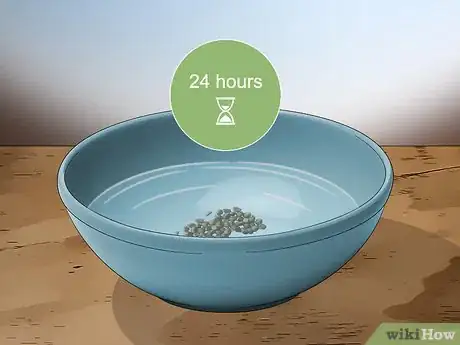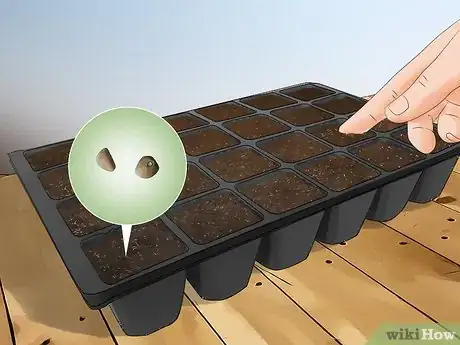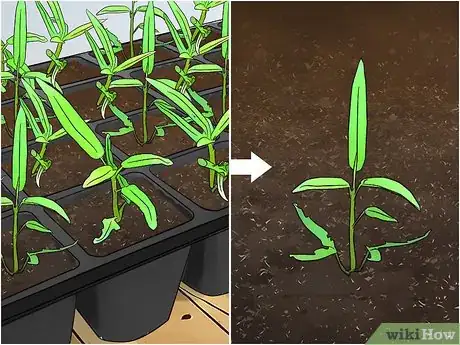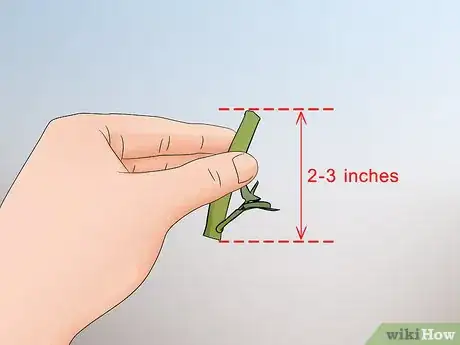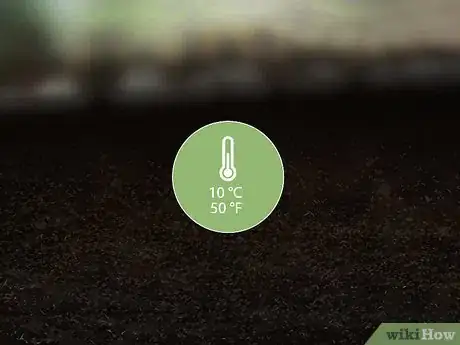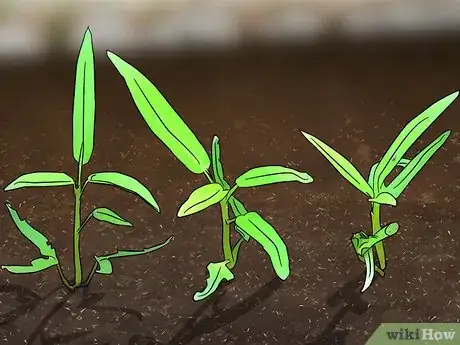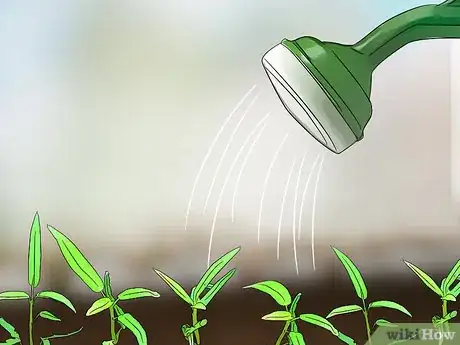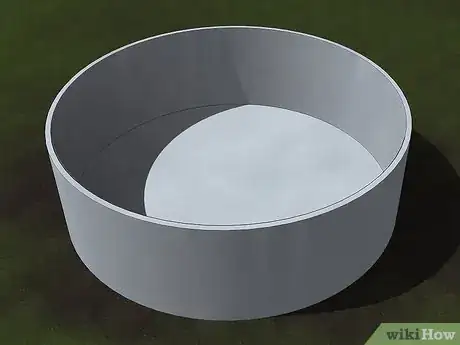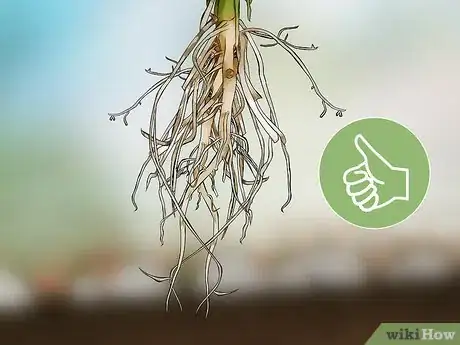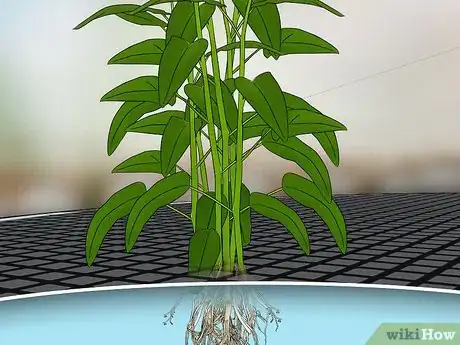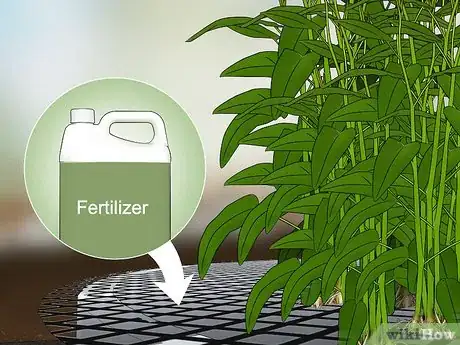This article was co-authored by Lauren Kurtz. Lauren Kurtz is a Naturalist and Horticultural Specialist. Lauren has worked for Aurora, Colorado managing the Water-Wise Garden at Aurora Municipal Center for the Water Conservation Department. She earned a BA in Environmental and Sustainability Studies from Western Michigan University in 2014.
There are 12 references cited in this article, which can be found at the bottom of the page.
This article has been viewed 106,435 times.
Kangkong, or water spinach, is an edible plant that is mostly used in Southeast Asian cooking. It has a nutty flavor similar to spinach. If you want to grow it, you're in luck because it is a relatively low-maintenance plant. It just requires a lot of water and a decent amount of fertilizer. You can grow this plant from seeds or cuttings, and then place the plants in either soil or a pot filled with water. Before you plant it, however, check the laws in your area, as it's considered a weed in some tropical climates and planting it may be forbidden.
Steps
Starting Seedlings and Cuttings
-
1Soak seeds in water a day before planting. This plant loves water, and soaking the seeds ahead of planting will start the germination process. Just place them in a shallow basin with a thin covering of water.[1]
- You can find kangkong seeds online or at some gardening stores. You'll need at least 10 seeds to get a small crop of water spinach.
- Plants grown from seeds may not do as well as plants taken from cuttings. They also take longer to get established.[2]
-
2Plant the seeds inside in trays to start. Place potting soil in your seedling tray. Create a small hole that's about 0.5 in (13 mm) deep. Drop in 1-2 seeds in each hole, and cover the seeds up with potting soil.
- The tray should be at least 2 to 3 inches (5.1 to 7.6 cm) deep so the plant can start developing roots.
Advertisement -
3Transplant the seedlings when they reach 4 to 6 inches (10 to 15 cm). These plants need a decent amount of growth before you move them outside. Once they reach this height, start checking for leaves.
- They should have 4 well-established leaves before you move them.
-
4Start with cuttings from another plant for a quicker method. Wait at least a day after harvesting before you take a cutting. Cuttings should be at least 2 to 3 inches (5.1 to 7.6 cm) long.[3] Place the cuttings in water, stem side down. Leave them in the water, changing it out every day or so.[4]
- In a couple of days, they should start growing roots. Wait until day 9 or so before you try to plant them. They should have a well-established root system by then.[5]
Planting Kangkong in the Ground
-
1Wait until nighttime temperatures rise above 50 °F (10 °C). This plant thrives in a temperature of 75 to 85 °F (24 to 29 °C). However, it can be damaged if the temperatures drop below 50 °F (10 °C). Make sure your area has warmed up enough before you move your plants outside.[6]
- Definitely wait until several weeks after the last frost before taking these plants outside.
- Don't plant your kangkong until the nighttime temperature remains well above 50 °F (10 °C).
-
2Dig a small hole with a spade or your hand. The hole should be just big enough to fit the seedling or cutting. You can just use your hand with a gardening glove if the ground is soft enough. If it's not, you'll need to use a small spade to make the hole.[7]
- Do not put plants closer than about 6 inches (15 cm) apart.
-
3Plant the seedlings or cuttings. Put the seedling in the hole you've just dug. Fill in the hole with dirt, and pat down the top of the soil. Make sure the plant is solidly in the ground before moving on to the next one.[8]
-
4Water the plants thoroughly. These plants thrive on water, so once you get them in the ground, provide enough water to soak the ground. You want to get them well established with plenty of water.
- You should irrigate this crop every 1-2 days.
-
5Sow seeds outside if you prefer. Start with rows that are 6 to 8 inches (15 to 20 cm) wide. For every 1 foot (30 cm), plant 6-10 seeds, spreading them out evenly along the row, spacing them out side-to-side as well as lengthwise along the row. Plant the seeds about 0.5 in (1.3 cm) deep, and cover them with soil.
- Wait until the daytime temperature is consistently over 75 °F (24 °C).
Settling Kangkong in Water
-
1Choose a large pot or basin for your kangkong. Kangkong can grow in a pot of water. You can choose as large a pot as you want. However, keep in mind that you need to be able to reach to the middle of the pot to harvest your plants, so keep it under 4–5 feet (1.2–1.5 m).[9]
- You'll also want to be able to inspect your plants for diseases, so make sure the pot is small enough for that purpose.
-
2Set a steel mesh into the top of the pot. This mesh will hold the cuttings just under the water. That way, they won't sink to the bottom, but they'll still get plenty of water.[10]
- You can find steel mesh online or at home improvement stores. You'll need enough to stretch across your pot, so measure ahead of time.
- If your mesh is fine enough, you can actually germinate the seeds on top of the mesh. However, if it's not very fine, you'll need to use cuttings.
-
3Pick the Pak Quat or "white stem" variety for your basin. This variety grows best in aquatic situations like a large pot or basin. You might also find it under the name "water ipomea."[11]
- The other variety, Ching Quat, can also be grown in water, but it can be planted in a garden, as well.
-
4Wait until your cuttings have well-established roots. Before putting them in your main growing pot, grow the roots in a cup or pitcher of water. That way, they'll start out happier and healthier in your large pot.[12]
- Your roots should have about 9 days of growth on them.
-
5Place the cuttings on top of the mesh. Set the cuttings in the top of the container. You can prop the cuttings up against each other or even lightly tie a piece of string around them. Eventually, they will stand up on their own when their roots start sinking into the mesh below.[13]
- Make sure the leaves are above the surface.
-
6Fertilize the water. Since you're not growing this plant in the soil, you'll need to provide nutrients. Select a fertilizer that is high in nitrogen. Use about 2 tablespoons (30 mL) of the garden fertilizer per gallon of water in the container.[14]
- If you're not using liquid fertilizer, mix the fertilizer with a little water before pouring it into the container.
Warnings
- Check to make sure it's legal to grow water spinach in your area. Because it grows so vigorously, it's considered an invasive species, and some areas ban it.⧼thumbs_response⧽
References
- ↑ http://balconygardenweb.com/how-to-grow-kangkong-growing-water-spinach/
- ↑ http://balconygardenweb.com/how-to-grow-kangkong-growing-water-spinach/
- ↑ http://balconygardenweb.com/how-to-grow-kangkong-growing-water-spinach/
- ↑ https://www.youtube.com/watch?v=UVXKMUhcDJo&feature=youtu.be&t=11
- ↑ https://www.youtube.com/watch?v=UVXKMUhcDJo&feature=youtu.be&t=54
- ↑ https://worldcrops.org/crops/water-spinach
- ↑ https://www.youtube.com/watch?v=ow8kSOjvvp0&feature=youtu.be&t=65
- ↑ https://www.youtube.com/watch?v=ow8kSOjvvp0&feature=youtu.be&t=65
- ↑ http://www.abc.net.au/gardening/factsheets/growing-kangkong/9432670
- ↑ http://www.abc.net.au/gardening/factsheets/growing-kangkong/9432670
- ↑ http://www.abc.net.au/gardening/factsheets/growing-kangkong/9432670
- ↑ https://www.youtube.com/watch?v=UVXKMUhcDJo&feature=youtu.be&t=54
- ↑ http://www.abc.net.au/gardening/factsheets/growing-kangkong/9432670
- ↑ https://agrilifeextension.tamu.edu/browse/featured-solutions/gardening-landscaping/fertilizing/
- ↑ http://www.abc.net.au/gardening/factsheets/growing-kangkong/9432670
About This Article
Kangkong, or water spinach, is an edible plant that requires little maintenance to grow. If you’re starting your kangkong from seeds, soak them in water for 1 day, then plant them in starter trays filled with potting mix. Place 1 or 2 seeds per hole and cover them with another thin layer of potting mix. Once they reach 5 inches tall, transplant them in the ground. Alternatively, start your kangkong from cuttings and plant them directly in the ground. Whichever method you use, wait until a few weeks after the last frost when it’ll be warm enough to plant them. Plant your seedlings at least 6 inches apart in the soil. Water them generously every 1 or 2 days, since kangkong thrive in moist conditions. For more tips from our Gardening co-author, including how to plant your kangkong in water, read on!
